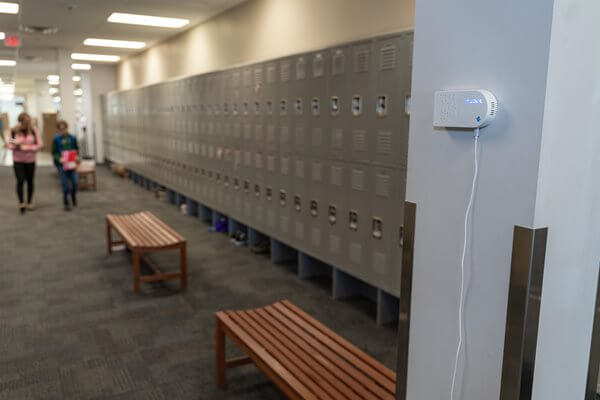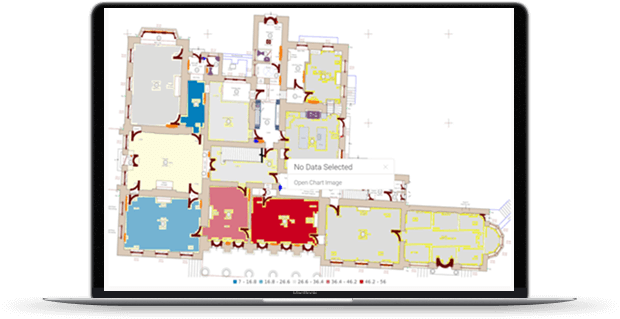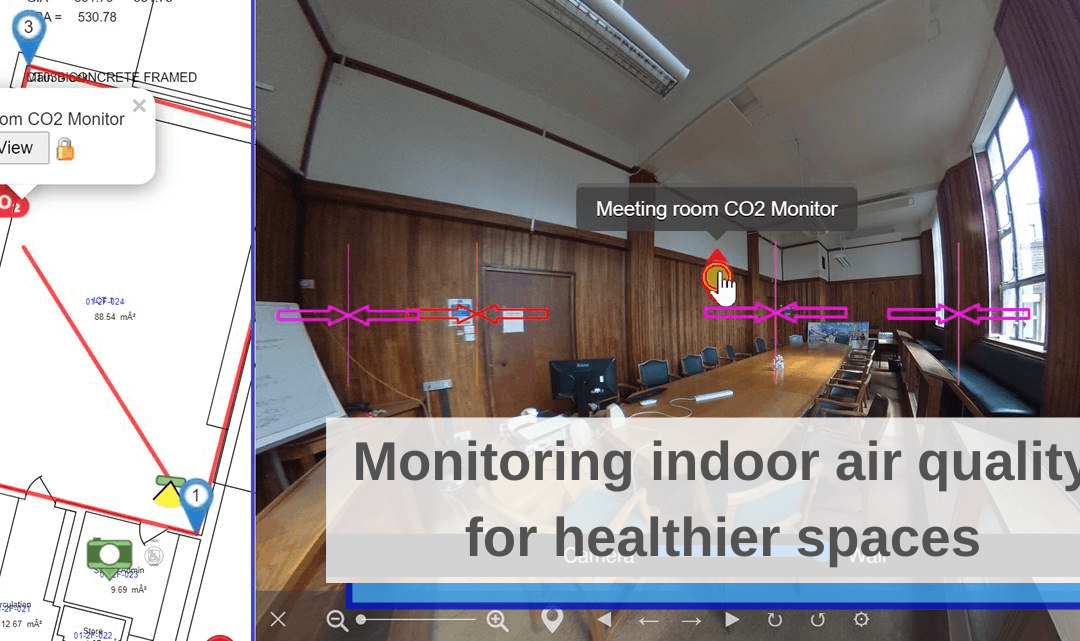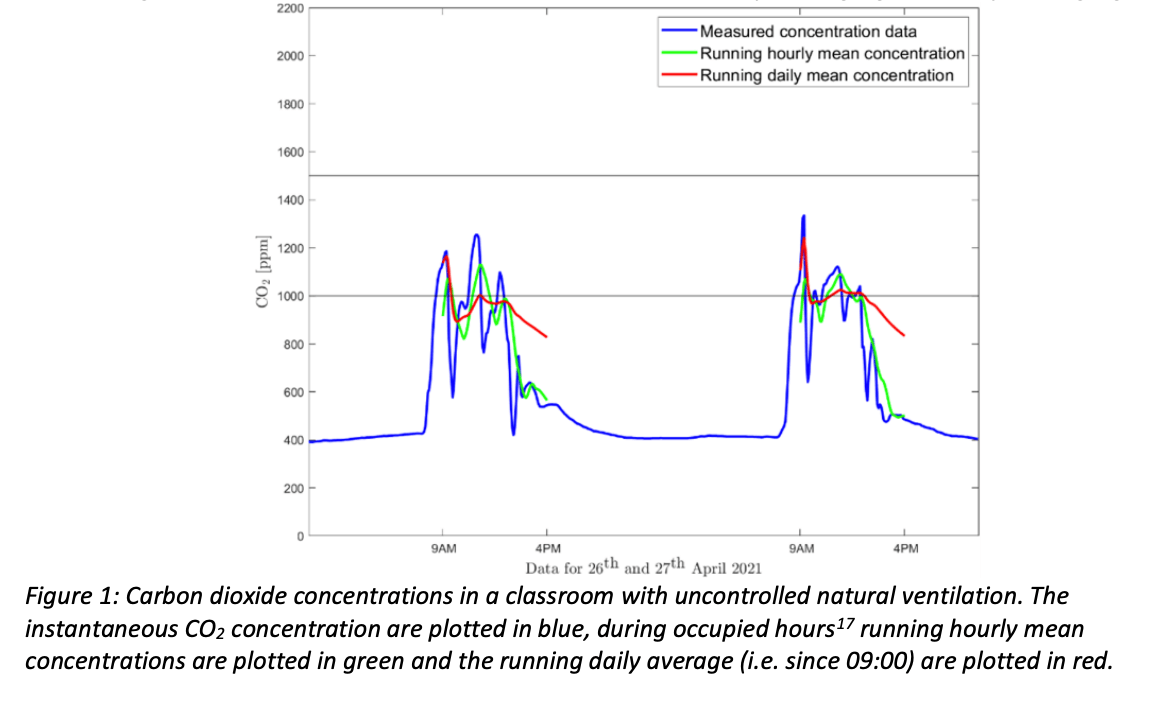Renewed concern about the issue of monitoring indoor air quality in school classrooms has been prompted by fears of transmission during the COVID-19 pandemic.
But COVID is far from the only factor school business managers, bursars and business managers should be concerned with when constructing their approach to managing indoor air quality, with external pollutants and insufficient oxygen availability also leading to a subpar learning environment. It is then important that an informed approach is taken with the help of asset management software.
The dangers of high levels of CO2
The Health and Safety Executive (HSE) have declared that workspaces should aim for CO2 concentration levels below 800ppm, with levels over 1500ppm indicating a significant problem with ventilation, requiring action to be taken. High levels of CO2 can pose a risk to students’ ability to learn as it indicates reduced oxygen availability that may interfere with concentration.

TSI’s Airassure™ indoor air quality monitor is a networked, Internet of Things-enabled monitor that can automatically report multiple indoor air quality factors. For instance, Co2 levels, humidity and particulates which can be reported directly into an asset management system.
Reading CO2 monitors
CO2 monitors are a popular implementation used to assess how well ventilated an area is. As CO2 is exhaled during respiration, high concentrations indoors indicate poorly ventilated areas. CO2 monitors are typically read using screens on the device itself, or otherwise via wireless/bluetooth software that allows monitoring to take place using a smartphone. HSE warns that the single ‘snapshot’ readings collected by manual checks may be misleading as they fail to provide a comprehensive view of CO2 levels in classrooms during the day.
CO2 monitors can now be Internet of Things (IoT) enabled devices meaning that they can connect to your asset database over the internet 24/7, including alerts when levels exceed the recommended threshold, allowing for building management to make informed decisions about ventilating their estate.
By integrating readings from CO2 devices with other asset management information, building managers will be able to make a holistic evaluation of where about in the estate should be prioritised for expenditure in order to minimise costs to fix ventilation issues and improve the management of indoor air quality.
Monitoring versus action
While the Department for Education’s (DfE) £25 million scheme to provide CO2 monitors appeared promising upon its launch in September 2021 it has faced criticism for its insufficient scope. It promised to provide schools across the country with 300,000 CO2 monitoring devices, meaning one for every two classrooms and staff rooms. These devices are portable and are advised to be moved around to test the whole estate for monitoring indoor air quality.
School business managers, bursars and business managers can keep track of movable CO2 monitoring devices using asset management software featuring interactive floor plans and even 360 degree images to provide an overview of assets that require management.
Although they are vital to ensuring safe levels of ventilation within classrooms, CO2 monitors are not the solution. Putting new mitigating measures, such as mechanical ventilation or air purifying filters, in place is likely to be a costly endeavour and has not been centrally supported in the same manner that CO2 monitors have, meaning SBMs and bursars have had to weigh difficult financial decisions.
A comprehensive approach
SBMs and facilities managers can take a holistic approach to improve indoor air quality and ensure student and staff wellbeing, looking beyond the pandemic, with the help of asset management software.
Your key takeaways
- While the DfE’s investment in CO2 devices for schools in response to the COVID-19 pandemic is a good start for monitoring indoor air quality in classrooms, there remains more to be done.
- High CO2 levels increase not only transmission of COVID-19, but other airborne illnesses, and risks interfering with students’ ability to focus and staff well-being.
- CO2 monitors can be kept track of, and their readings recorded, using an asset database.
- Other particulates arising from pollution are another indoor and outdoor air quality concern that school building management are likely keen to address.
How Altuity can help
- Altuity’s AltoSites asset management system helps school business managers, bursars and facilities managers monitor and improve air quality in their sites.
- Using interactive floor plans and 360 degree visualisation software, AltoSites makes asset management simple by allowing building managers to keep track of the location and readings of air quality monitoring devices.
- Integrating 24×7 monitor readings into your asset management software will provide better quality information on IAQ trends identifying peaks and troughs.
- By ensuring all your data is in a single, easy-to-access location, AltoSites allows for expenditure decisions to be made based on which areas of your site require immediate action.

More information about the management of indoor air quality and how Altuity can help can be found on our AltoSites resources page where you’ll be able to download our in-depth white paper –“Improving the management of Indoor Air Quality“
Alternatively, please visit our contact page where you’ll find details on how to email/call us!


